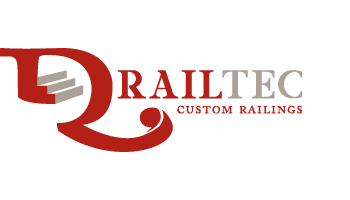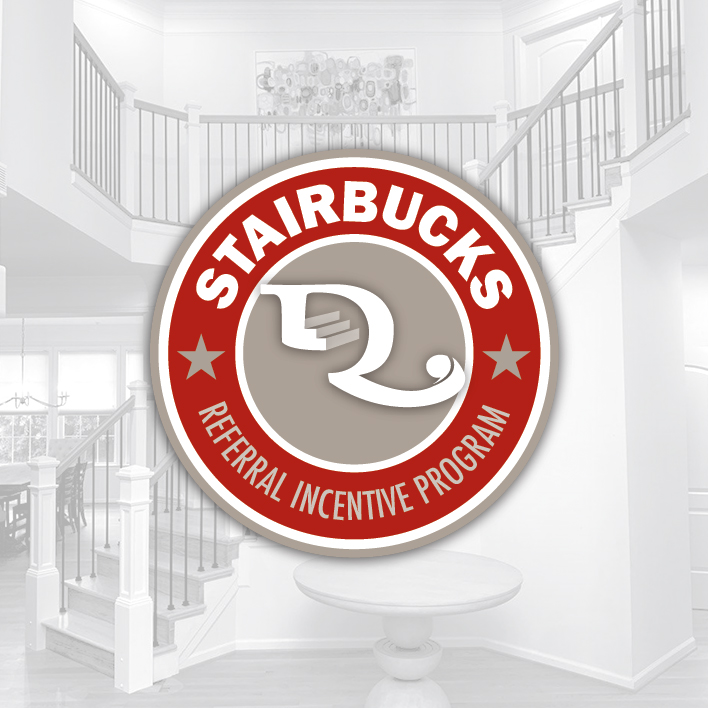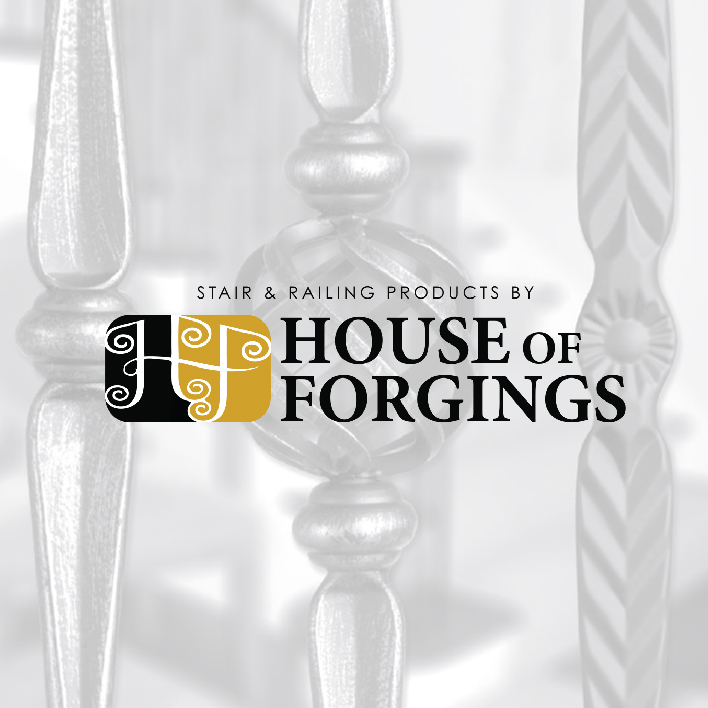
Terminology
Please spend some time familiarizing yourself with the following industry terminology. Many of the terms below will factor into the design of your railing system: what type of newel would work well? Do you want iron or wood balusters? What material would you like for your hand rail? Learn about each below…
Balusters
A turned, curved, or otherwise vertical section placed between the handrail and the stair tread or stringer.
Balustrade
A stair system, including the framework of rails‚ newels‚ and balusters‚ designed to flow together from like components.
Brackets
Typically thin pieces made from the same species of wood as the staircase‚ and are either stained or painted.
Box
Straight stairs with closed stringers.
Bull Nose
A rounded front to a board‚ referring to the stair tread or piece of trim applied to the floor on balcony areas‚ to which balusters are attached.
Carriages
Also known as stringers‚ cut joists‚ jacks‚ frame‚ or rough carriage. The angled pieces of wood used to support the stair system and to serve as a resting place for the treads.
Cove Moulding
Decorative moulding placed under the stair treads‚ typically .625″ tall by the width of the stairs.
Easing
The curved junctions placed in a handrail to bring the parts at different planes into one flowing curve.
Epoxy
A two-part adhesive used to bond materials from wood to composites to metals. Epoxies are especially useful in bonding metal to wood in stair applications or caps.
False End Treads
A less expensive option when using carpet on a stair tread. False treads come in a kit with a plywood riser and plywood treads‚ which receives a nosing that is attached to the face and the side. False end treads‚ when covered with carpet, look like solid treads and are less expensive than a solid wood tread.
Fillet
A thin strip of wood that fills the plowed rail space between balusters in a handrail or shoe rail.
Finial
The ornamental top of a newel post. Box newels often receive an optional finial.
Fittings
Pieces of wood that are shaped with the same profile as the handrail to form changes of direction for the handrail.
Flight of Stairs
An uninterrupted series of steps and stringers reaching from one landing to the next.
Flutes
Decorative vertical grooves placed in a wood surface such as a baluster or newels to upgrade the look.
Gradient of a Stair
The ratio between the run and riser; the angle of inclination.
Guardrail
A protective railing designed to prevent people or objects from falling into a stairwell or other open spaces.
Glue Blocks
Blocks of wood attached to the underside of a stair at the junction of the riser and tread. Glue blocks secure the treads and risers together and are used to prevent movement‚ which causes squeaks.
Newels or Newel Post
A vertical post at the center and regular turns and junctions of a rail system. Newels provide the main support for the rail system. There is a starting newel at the base of the stairs and a landing newel at the turns or top of the stair. Box newels and pin top newels are common types.
Open Risers
A staircase designed with nonexistent risers. This type of stair system does not meet most code requirements.
Pitch
The angle of the stairs.
Rake
The angled part of a stairway.
Rail System
A complete rail system consisting of the handrail‚ newels‚ fittings and balusters.
Risers
The vertical face of a step.
Soffit
The visible sloping under, or surface between, the stair stringers.
Stringer
The inclined boards on which the treads and risers are attached. Stringers provide the support for the stairs.
Treads
The horizontal part of a staircase upon which the foot is placed.
Veneer
A thin slice of higher-grade wood used to cover surfaces that aren’t visually appealing. Veneer is often used in tread ends and stair stringers.
Volutes
A round piece of wood with a newel in the center, surrounded by balusters. Ascends to the rake of the handrail.
Winders
Treads that are narrower at one end than the other. Used to turn corners or negotiate curves.



